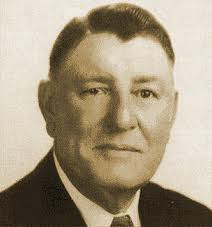Annotation:Jeff Sturgeon: Difference between revisions
No edit summary |
No edit summary |
||
| Line 1: | Line 1: | ||
---------- | |||
{{TuneAnnotation | |||
|f_tune_annotation_title= https://tunearch.org/wiki/Annotation:Jeff_Sturgeon > | |||
|f_annotation='''JEFF STURGEON'''. American, Reel (cut time). USA, Kentucky. A Mixolydian. AEae tuning (fiddle). ABCC. Known as a Kentucky tune. The tune sounds double-tonic (i.e. moving from an 'A' Major chord to a 'G' Major chord, yet Salyer's accompanist consistently played an 'E' Major chord in place of the 'G'; many old-time musicians prefer that slightly discordant sound. Salyer learned the tune from Bob Johnson of Johnson County, Kentucky, but (according to Bruce Greene) the tune was named for the fiddler who taught Johnson to play. Jeff Titon (2001) the tune is a 'rare local tune', whose only source was Salyer. | |||
---- | [[File:salyer.jpg|240px|thumb|left|John M. Salyer]] | ||
|f_source_for_notated_version=John Morgan Salyer (Salyersville, Magoffin County, Ky., 1941) [Milliner & Koken, Titon]. | |||
---- | |f_printed_sources= Milliner & Koken ('''Milliner-Koken Collection of American Fiddle Tunes'''), 2011; p. 331. Titon ('''Old-Time Kentucky Fiddle Music'''), 2001; No. 73, p. 102. | ||
|f_recorded_sources=Berea College Appalachian Center AC003, "John M. Salyer: Home Recordings 1941-1942, vol. 1" (1993). Yodel-Ay-Hee 003, "Dirk Powell and John Hermann" (1992). | |||
|f_see_also_listing=Jane Keefer's Folk Music Index: An Index to Recorded Sources [http://www.ibiblio.org/keefer/j02.htm#Jefst]<br> | |||
Hear Salyer's 1940 field recording at the Digital Library of Appalachia [http://www.aca-dla.org/cgi-bin/showfile.exe?CISOROOT=/Berea43&CISOPTR=1390&filename=1391.mp3], Berea Sound Archives [https://soundarchives.berea.edu/items/show/4233] and at Slippery Hill [https://www.slippery-hill.com/recording/jeff-sturgeon]<br>< | |||
}} | |||
'''JEFF STURGEON'''. American, Reel (cut time). USA, Kentucky. A Mixolydian. AEae tuning (fiddle). ABCC. Known as a Kentucky tune. The tune sounds double-tonic (i.e. moving from an 'A' Major chord to a 'G' Major chord, yet Salyer's accompanist consistently played an 'E' Major chord in place of the 'G'; many old-time musicians prefer that slightly discordant sound. Salyer learned the tune from Bob Johnson of Johnson County, Kentucky, but (according to Bruce Greene) the tune was named for the fiddler who taught Johnson to play. Jeff Titon (2001) the tune is a 'rare local tune', whose only source was Salyer. | ------------- | ||
[[File:salyer.jpg| | |||
Jane Keefer's Folk Music Index: An Index to Recorded Sources [http://www.ibiblio.org/keefer/j02.htm#Jefst]<br> | |||
Hear Salyer's 1940 field recording at the Digital Library of Appalachia [http://www.aca-dla.org/cgi-bin/showfile.exe?CISOROOT=/Berea43&CISOPTR=1390&filename=1391.mp3], Berea Sound Archives [https://soundarchives.berea.edu/items/show/4233] and at Slippery Hill [https://www.slippery-hill.com/recording/jeff-sturgeon]<br>< | |||
---- | |||
Revision as of 16:34, 14 November 2020
X:1 T:Jeff Sturgeon S:John Salyer (1882-1951, Salyersville, Magoffin County, Ky.) M:C| L:1/8 R:Reel N:AEae tuning D:https://www.slippery-hill.com/recording/jeff-sturgeon D:https://soundarchives.berea.edu/items/show/4233 Z:Transcribed by Andrew Kuntz K:Amix [A,2E2]a2 abag|efga b2b2|[A,2E2]a2 abag|efed c2B^G|[M:2/4]A2:|| ef|[M:C|]g2 ge [E2B2][E2B2]|egge [E2B2][E2B2]|e2e2 efed|cAB^G A2A2|| |:[A,2E2]AB cAcA|[E2B2]Bd cAcA|[A,2E2]AB cAcA| B2 Bd c2d2|efed cAB^G|[M:2/4]A2AA[M:C|]:|
JEFF STURGEON. American, Reel (cut time). USA, Kentucky. A Mixolydian. AEae tuning (fiddle). ABCC. Known as a Kentucky tune. The tune sounds double-tonic (i.e. moving from an 'A' Major chord to a 'G' Major chord, yet Salyer's accompanist consistently played an 'E' Major chord in place of the 'G'; many old-time musicians prefer that slightly discordant sound. Salyer learned the tune from Bob Johnson of Johnson County, Kentucky, but (according to Bruce Greene) the tune was named for the fiddler who taught Johnson to play. Jeff Titon (2001) the tune is a 'rare local tune', whose only source was Salyer.


